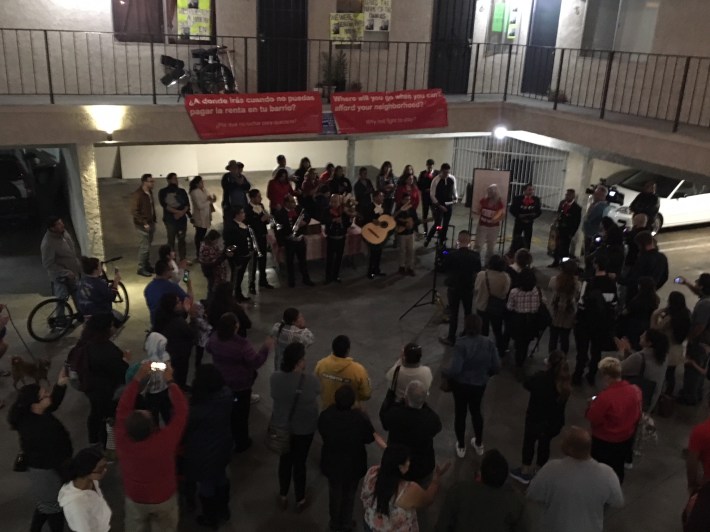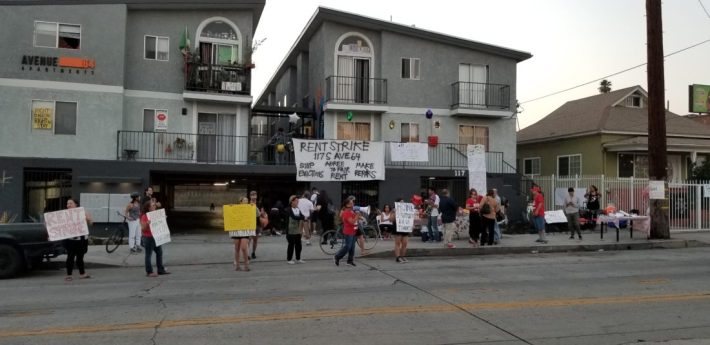[dropcap size=big]E[/dropcap]veryone in California wanted rent control, it seemed.
The conventional wisdom was that the housing crisis in California had walloped the voters enough that the concept of returning some form of rent regulation was finally pliable. Prop 10, which would have opened the door for that to happen, should have easily won a majority of “Yes” votes.
As late of September of this year, less than two months before Election Day, a USC Dornsife and L.A. Times poll found that 52 percent of Californians, and 67 percent of polled renters, supported the idea of rent control. But — only 36 percent of those same people planned on voting in favor of Prop 10.
The proposition would have given cities and municipalities a green-light to pursue rent control policies by repealing a state law called Costa-Hawkins, which prevents cities from passing new rent control policies.
Last week, when votes on Election Day were counted, 2.6 million Californians voted in support of Prop 10, while 4.3 million Californians voted against it, the biggest margin of defeat in the proposition races this year. Only the county of San Francisco voted in favor of it — the entire state rejected the thing.
RELATED: Homelessness Is So Bad This Man Decided to Chain Himself to a Fence and Go On a Hunger Strike

So what happened?
“We were tremendously outspent,” Ged Kenslea told L.A. Taco. Kenslea is head of communications for the AIDs Healthcare Foundation, the L.A. based, nonprofit that was the main financial backers of the “Yes on Prop 10 campaign.
The AHF kicked in a little more than $23 million of the total $25.6 million raised by the Yes on 10 campaign. The No on 10 campaign, financed by a wide array of real estate interests from inside and outside of the state, raised a remarkable $74.8 million, an almost 3 to 1 spending disparity.
[dropcap size=big]B[/dropcap]ut that doesn’t explain it all. It turns out, both campaigns spent about the same on conventional TV and radio advertising.
Using campaign finance information available on Cal-Access, the Yes on 10 campaign spent at least $15.4 million on both TV and online advertising, while the No on 10 campaign spent slightly less, $15.1 million on TV, radio, and online.
Lynn Vavreck, a professor of political science at UCLA, told L.A. Taco that conventional television ads aren’t as effective as you might expect. "Generally the effects of ads are small and go away quite quickly – within a few days,” she explained. “So it is likely that in these cases, the ads canceled each other out as there was a lot of advertising on both sides.”
That dollar-spent figure doesn’t take into account money spent on guerrilla marketing services like paid social media content, comments, likes and shares. This also includes paying social media celebrities or so called influencers to sway the electorate.
“I think it was really the power of the dollar beyond the TV ads,” Kensla explained. “We were bombarded by terrestrial radio ads too, but I think it was less our messaging than the deep pocketed opposition who were able to sow doubt and confusion.”
RELATED: New Film ‘Blindspotting’ Tackles Gentrification in Black and White, Surreal and Real
[dropcap size=big]I[/dropcap]f you were anywhere near a room with a TV on in the months leading up to the election you probably saw the No on 10 ads repeated constantly. Usually featuring an older person, or a middle aged veteran looking straight into the camera and saying “Prop 10 has no protections for renters, seniors, or veterans,” the ads warned that the passage of Prop 10 would “drive up rents and make housing less affordable.”
Another ad featured someone identified as a “California renter and mom” saying that “Prop 10 has no protections for renters.” Prop 10 only promised to repeal Costa-Hawkins, allowing municipalities to devise their own rent control policies, or not.
The advertising was threatening the very problem the proposition was trying to resolve.
“Their main tactic was to confuse voters,” Arielle Sallai told L.A. Taco. Sallai is the communications director for the L.A. chapter of the Democratic Socialists of America, one of the constituents in the Yes on 10 coalition.
“People were confused about what Prop 10 was and what it would do,” Sallai said. “I met people days before the election who said they were voting no on 10 because they thought a no vote was for rent control.”

In a statement released to the press, the L.A. Tenants Union, another coalition member of the Yes on 10 campaign echoed a similar sentiment, saying that Californians were “tricked” into doubting that Prop 10 was the first step to establishing rent control laws in California.
But rent control activists have a problem with messaging throughout the state, even without the confusing language of Prop 10.
There were reports of intimidation by landlords threatening to raise rents on tenants if Prop 10 passed, and the shady advertising campaign financed by local and Wall Street real estate interests, scared that a repeal of Costa-Hawkins in the country’s most populous state would trigger a wave of rent control legislation throughout the country. Even the rapper Lil B tweeted out that he voted no on 10.

Out of four municipal rent control initiatives on the ballots in National City, Alameda, Santa Cruz, and Berkeley, only Berkeley voters approved a new rent control measure, Measure Q, which would have only gone into effect if Prop 10 had passed.
While the Prop garnered more yes votes in L.A. County than any other county in the state, it still failed to gain a majority. With its single win in San Francisco, the prop bottomed out at a 29 to 36 point difference in the state’s next most populous counties, San Diego and Orange.
“We did not have that much presence elsewhere in the state. We did not have the bodies or footprints in rural areas that we needed,” Kensla said.
'The fight for affordable housing has not gone away.'
But the AHF and the DSA have both said they plan to continue to pressure political representatives in California to support rent control policies and amendments to Costa-Hawkins, along with being open to putting another repeal of Costa-Hawkins on the 2020 ballot. Both DSA and the Tenants Union have also promised to continue organizing locally, and around the state, building coalitions with other activist groups and renters associations to agitate for rent control.
“The fight for affordable housing has not gone away. We’re going to carry on,” Kensla promised. “We had a groundswell of over 500 organizations and officials who came out in support of Prop 10. Our second fight will be in Sacramento.”
With rents rising throughout the state, homeownership declining, and multiple studies coming out in support of rent control policies, it seems like a statewide voter demand for rent control measures could be right around the corner. Then again, maybe the California dream of homeownership is too strong a dream to let go of just yet.
RELATED: Study: Business Improvement Districts Use Your Tax Dollars to Harass Homeless People







